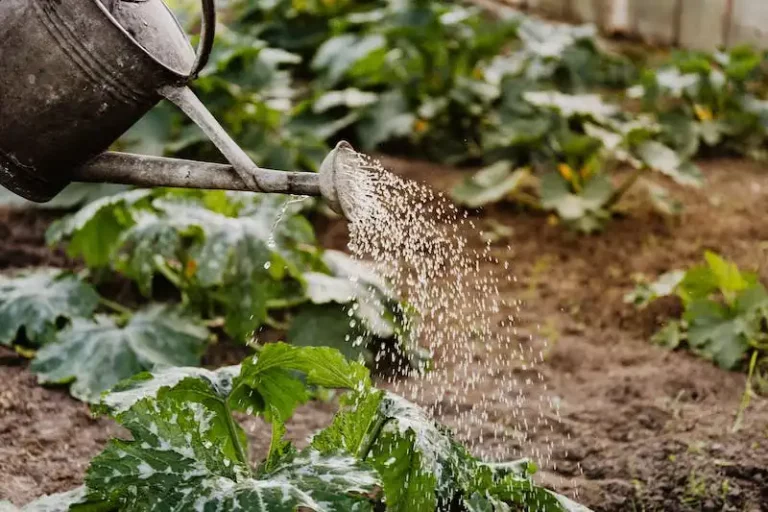Growing your own popcorn can be a fun and rewarding experience. Not only will you have the satisfaction of seeing your plants mature and produce delicious popcorn, but you will also have the opportunity to experiment with different varieties and flavors. In this article, we will discuss some basic tips on how to grow popcorn in your own garden.
First and foremost, it is important to choose the right location for your popcorn plants. Popcorn requires full sunlight and well-drained soils to thrive. It is also a heavy feeder, so be sure to amend your soil with compost or other organic matter before planting. Once you have prepared your garden bed, you can sow the popcorn seeds directly into the soil.
The ideal time to plant popcorn is usually in the spring, after the danger of frost has passed. Plant the seeds about three to four inches apart, in rows that are about three feet apart. This will allow the plants to have enough space to grow and produce the maximum yield of popcorn kernels. Remember to water your plants regularly, especially during dry periods.
As your popcorn plants grow, it is essential to protect them from pests such as rodents, aphids, and diseases like anthracnose. You can use organic pest control methods or erect physical barriers, such as fences or posts, to keep them out. Additionally, providing your plants with a sturdy support system, like stakes or trellises, will help prevent them from falling over.
Harvesting your popcorn is a critical step in the growing process, and timing is key. You should begin harvesting when the corn kernels are hard and dry. This is usually indicated by the husks turning brown or yellow and the kernels becoming firm. To harvest, simply pull back the husks and remove the ears of corn. Allow them to dry and cure for several weeks before shelling the kernels.
Once you have harvested your popcorn, it is important to store it properly to ensure it stays fresh and delicious. Popcorn should be stored in a cool, dry place, away from moisture and pests. Many growers use storage bins or containers with tight lids to keep the popcorn kernels intact. You can also freeze your popcorn for long-term storage, but be sure to label the containers with the date to keep track of its shelf life.
In conclusion, growing your own popcorn can be a fun and rewarding experience. By following these tips and directions, you can become a successful popcorn grower and enjoy the delicious popcorn you have produced in your own garden. So grab your gardening tools and get started on your popcorn-growing journey!
Popcorn Production and Marketing
Popcorn production and marketing require careful selection of the variety, proper planting and nutrition, and effective pest management.
First, choose a popcorn variety that is best suited for your location. Popcorn plants require slightly lower fertility than sweet corn and can be grown in a wide range of soil types. They prefer a pH between 6.0 and 7.0. Consider the climate and temperature of your region for optimal popcorn production.
When planting popcorn, use a spacing of 8-12 inches between plants and 30-36 inches between rows. Plant the seeds in early spring, when soil temperature reaches around 60°F. Then, cover the planting area with a thin layer of mulch to retain moisture and prevent weed growth.
Popcorn plants need regular watering and should receive about 1 inch of water per week. However, be careful not to overwater, as it can lead to fungal diseases or root rot. If the plants start wilting, it may be a sign that they need more water.
Popcorn plants are more susceptible to pests such as wireworms, beetles, and earworms. Regularly check your plants for signs of pests and take appropriate measures to control them. Applying organic insecticides or using natural pest control methods can help protect your plants.
Harvesting popcorn is slightly different from harvesting other types of corn. Wait until the popcorn kernels are hard and fully matured. The husks should have turned dry and yellow. To test for maturity, take a sample and try popping the kernels. If they pop easily and produce large, fluffy pieces, they are ready for harvest.
After harvesting, allow the popcorn ears to dry further by hanging them in a dry, well-ventilated area. Once dried, remove the kernels from the ears and store them in a clean, airtight container. Properly stored popcorn can be used for up to a year.
Marketing popcorn can be a fun and profitable endeavor. Consider selling your popcorn at local markets, festivals, or online platforms. Try creating unique packaging or adding flavorings and decorations to attract customers. You can also explore selling popcorn products such as popcorn balls, flavored popcorn, or popcorn-based snacks.
Overall, with proper selection, planting, care, and marketing, popcorn production can be a rewarding and enjoyable experience. So, start your popcorn journey today and enjoy the delicious results!
Hybrid Selection
When it comes to growing your own popcorn, selecting the right hybrid is crucial. The economics of popcorn farming largely depend on the standing crop that prevents open-market fields from being harvested.
There are different types of hybrids available that are likely to perform better under specific conditions. The correct hybrid selection can directly impact the yield and quality of your popcorn. It is important to choose a hybrid that has strong roots, as well as resistance to diseases and pests such as rootworm and nematodes. This will ensure that your popcorn plants can withstand various challenges in the field.
Growers should also consider the market demands when selecting a hybrid. The most popular ones are those that produce large, well-filled ears. These hybrids command a higher market price and are in greater demand by consumers.
In order to select the right hybrid, growers can conduct various tests and trials. One common practice is to collect a sample of popcorn ears from different hybrids and evaluate their quality and yield. This can be done by measuring the weight of popcorn obtained from each ear. It is also important to assess the quality of the popcorn, including its moisture content and hull integrity. Evaluating these factors will help growers make informed decisions about what hybrids to plant.
Another consideration when selecting hybrids is the environmental conditions in which the popcorn will be grown. Some hybrids are more resistant to drought and wilting, making them suitable for areas with limited water availability. Others may be more resistant to diseases or pests that are frequently found in certain regions.
Additionally, growers should also take into account the utilization category of the hybrid. Popcorn hybrids can be classified into three categories based on their popability: butterfly, mushroom, and rice. Butterfly hybrids produce large, fluffy popcorn for a theater-like experience. Mushroom hybrids produce smaller, dense popcorn often used in caramel popcorn. Rice hybrids produce small, tender kernels often used in savory popcorn flavors.
It is important to properly fertilize and irrigate the popcorn plants in order to maximize yield and quality. Regular monitoring of the field will help growers identify any issues that may be affecting the crop, such as pests or diseases. Taking appropriate measures to protect the plants, whether through the use of organic or chemical methods, can help prevent potential damage.
In conclusion, hybrid selection is a key factor for successful popcorn production. Choosing the right hybrid based on the specific conditions, market demands, and preferred popcorn characteristics is essential in order to achieve a successful harvest with high-quality popcorn.
Soil Type
When it comes to growing your own popcorn, soil type is crucial to ensure healthy and productive plants. Different varieties of popcorn have different soil requirements, but in general, they prefer soil with good drainage and a sandy-loam texture. A pH level between 5.5 and 7.5 is best for popcorn.
Before planting your popcorn, it’s important to test your soil to determine its composition and nutrient content. You can obtain a soil testing kit from your local garden center or agricultural extension service. The results will help you understand the fertility and nutritional needs of your soil and will guide you in making any necessary amendments.
Nematodes are a common problem in popcorn crops, particularly in European and Japanese varieties. These microscopic worms can damage the roots of your plants, leading to stunted growth and lower yields. To prevent nematode infestations, select nematode-resistant varieties and rotate your crops regularly to disrupt their life cycle.
It is also important to select a suitable location for your popcorn garden. Popcorn plants require a full sun exposure and should be planted after the danger of frost has passed. Choose a spot with good air circulation to prevent diseases and allow the plants to dry naturally after rain or irrigation.
Proper soil preparation is essential for successful popcorn cultivation. Begin by removing any weeds or unwanted vegetation from the planting area. You can also till the soil to a depth of at least 8 inches to ensure a loose and friable growing medium.
A soil sample can be sent to a laboratory for a comprehensive analysis, which will provide insights into the nutrient composition and soil fertility. Based on the laboratory’s recommendations, you can amend the soil with organic matter or mineral fertilizers to ensure optimal nutrition for your popcorn plants.
Spacing is another important consideration when planting popcorn. The recommended spacing is generally 10-12 inches between plants in rows spaced 30-36 inches apart. This gives the plants enough room to grow and prevents overcrowding, which can lead to reduced productivity and increased disease susceptibility.
After planting, proper care and maintenance play a significant role in the success of your popcorn crop. Keep the soil moist, but not overly wet, and avoid overwatering, as it can lead to shallow root development and lower yields. Regularly monitor your garden for pests, diseases, and weeds, and take appropriate measures to control any issues that arise.
Harvesting time for popcorn is determined by the maturity of the ears. The ears should be fully mature and have a moisture content of around 20%. To check maturity, carefully peel back the husk and press a thumbnail into a kernel. If a dent is left, the popcorn is ready for harvesting. If the kernel resists denting, it needs more time to mature.
Once the popcorn is harvested, it should be properly dried before storing. Spread the ears in a well-ventilated area and allow them to air dry for several weeks. This will prevent mold and mildew growth and ensure the kernels are fully dried and ready for popping.
In conclusion, soil type is a critical factor in successfully growing your own popcorn. By selecting the right soil, preparing it properly, and providing appropriate care, you can enjoy a bountiful crop of delicious, homemade popcorn.




